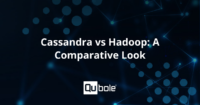This blog post originally appeared on the Import.io blog.

Start the new year off right by making sure your Big Data team is aligned.
It is the goal of many business leaders to effectively utilize big data analytics to improve their companies. That means having the best people on the job as part of a data team designed to derive insights from vast amounts of information the business chooses to collect. Every business, of course, has different needs and goals, meaning each data team assembled will be composed of different types of people and roles. Some commonalities will exist between organizations, along with one simple fact: to truly be effective as a team, they’ll need to work well as a team. Collaboration is the key to success in this scenario, but it’s all too easy to build a team featuring too much conflict or inefficiency. Carefully outlining the roles and responsibilities of each team member is a crucial step to assembling a highly functioning data team, one that business leaders need to take to meet the challenges that come with big data solutions.
When creating the right team, while the number of roles may vary, the chief roles will largely be made up of data scientists, business analysts, and developers. Consider these the building blocks that help the team reach its true potential while working with big data. Ignore any single one of these roles, and the team will likely not be able to accomplish as much as they would otherwise. Though these jobs form the backbone of a productive data team, the skill sets associated with each one are different enough that collaboration can sometimes be a significant challenge. At the same time, expecting any one person to be able to handle all these roles is also asking way too much.
Data Scientist
The data scientist seems relatively straightforward in the description. This is the person most in tune with the data and how best to discover insights from it. The data scientist will have a highly specialized skill set, ranging from R to data mining talents. Data scientists should also have a familiarity with data tools like Hadoop and Apache Spark while knowing the pros and cons of the various big data vendors out there. While the description is straightforward, finding a qualified data scientist is a difficult task. Currently, there is a significant shortage of data experts as companies scramble to find the best data minds for their organizations. Many people claiming to be data scientists only have a casual knowledge of what big data analytics truly is. As such, every business should make sure they hire data scientists who display true expertise with analytics technologies.
Business Analysts
Business analysts are those people who are most familiar with how the business is run, what the strategic objectives are, and how big data fits into them. They have a deep understanding of the practices that will help achieve executives’ goals and can effectively utilize front-end tools. They may not fully understand the analytics world, but they can see its potential and what use it can have in improving the organization. They’re also in a good position to communicate these advantages to the higher-ups.
Developers
Developers have much to add to a data team as well. With programming skills, developers can write production-level code and algorithms that can lead to finding more insights from collected data. They have an even greater need for the abstraction of complexity related to using Big Data tools than data scientists and should focus on leveraging existing libraries and creating their own code for the specific business they’re a part of. Because developers are so intrinsically linked to data ingestion and processing, it’s vital to keep up communication with data scientists and analysts in order to fully enable analytics further downstream.
Differentiating the Roles
The lines between these roles often become blurred. In some situations, a person from one role can assume the responsibilities of another, like when a business analyst becomes an expert in data science. Though this can happen, it’s important to differentiate these roles since it’s simply too much work for one person. With each role defined, data teams can collaborate together through effective communication. In fact, communication may be one of the most valuable skills all team members should have. Without it, proper collaboration is next to impossible, and if big data goals aren’t reached, frustrations may build up over time.
Business leaders may also be tempted to find “unicorns”, or people who are perfectly skilled in all these categories, thus eliminating the need to hire a full team in the first place. Such people, however, are extremely rare, and it would be a waste of an organization’s time to search for them. Instead, hire the best team of people who can work well together and exemplify their individual roles. The results will be some impressive advances in big data analytics that will move the company forward.



